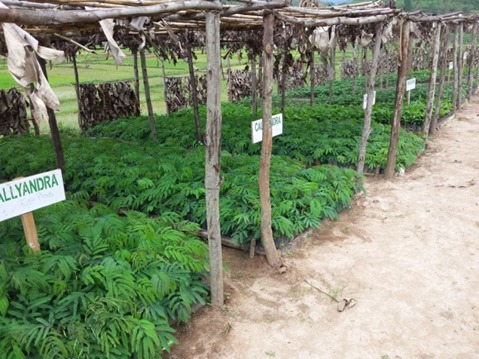
UGAMA within Environment Protection and Food Security.
Experts in environmental protection and land productivity from the Department of Self-sufficiency in UGAMA confirm that the activities to combat erosion and increase agricultural production in the suburbs of Ruterana Swamp, located in the two sectors of Rongi and Kiyumba, have combated erosion and increased production. in the mountains and in the swamps practically in the last three years.
Since 2014, the UGAMA organization, together with its partners, the international organization PROTOS, has intensified its activities to help the inhabitants of the Ruterana valley to better cope with the effects of climate change with the help of a new method of water conservation and distribution (GIRE) in order to increase production and protecting environment. The work is dominated by radical terraces, and agroforestry trees.
The work of progressive terraces and radical terraces, characterized first of all by teaching farmers the latest methods of anti-erosion, water harvesting and selected technicians are trained to measure and terraces making and progressive terraces depending on the type of the soil and the slope of the field.
The people who live in this area are the ones who work on the terraces of about forty hectares (40 ha) and one hundred hectares (100 ha) of progressive terraces, under the guidance of UGAMA technicians. These terraces are in addition to another 35 hectares of radical terraces and 135 hectares of progressive terrace that have been created since 2008. The Progressive terraces or radical terraces are planted with agroforestry trees mixed with forage.
UGAMA’s expert in creating terraces declares that after establishing these terraces, lime, manure, and agroforestry and the farmers are taught to cultivate it so that they can handle it well and increase the yield. And about 500 residents have been given jobs and helped to form groups of Twigire Muhinzi.
12 groups were formed where the beneficiaries of established terraces have consolidated their land and cultivated the selected crops which are maize and beans alternately depending on the season of the crop. UGAMA has also continued to accompany these groups leading to cooperatives formation because its main goal is to “support cooperatives”. Two co-operatives have so far obtained the permits and other local groups are encouraged to join these co-operatives so that they can own and manage their activities sustainably.
It should be noted that UGAMA is a Rwandan organization for the support of cooperatives based in South province, Muhanga district in Nyamabuye sector, and has been doing development activities in cooperatives throughout Rwanda for 39 years.
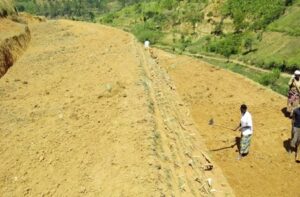
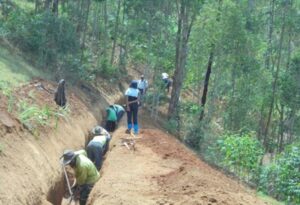
Radical terraces Progressive terraces
Regarding the sustainability of the activities, the program manager in UGAMA told us about the strategies they have to maintain these activities and its ownership, he told us that there are many activities related to increasing the knowledge and skills of these people, which are different meetings both academically and operationally; There are also advisory committees that have been established to supervise the farmers of these terraces in order to increase production and maintain these activities. There are other activities carried out by UGAMA such as agroforestry nurseries and fruits with more than 215,000 trees planted on radical terraces, progressive, and community farms.
Farmers are organized into cooperatives and small livestock are distributed among them in order to help farmers get manure to apply in the terraces, especially to improve nutrition.
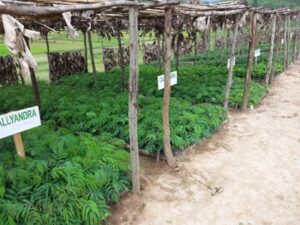
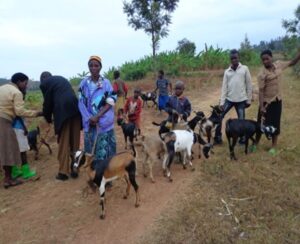
Agroforestry and fruits Distribution of small livestock
Apart from the farmers in the suburbs of Ruterana swamp, the rice farmers in this swamp are also happy with this activity so they give their testimony.
The chairperson of the cooperative that grows rice in the Ruterana marsh, Mr. Faustin MUSABYIMANA confirms that since the beginning of these activities in the suburbs of this marsh; water is no longer lacking in this swamp and the yield of rice has increased from 4.8 t to 5.6 t per hectare due to the increase in water and constant sources. The cultivated area increased from 70 hectares to 118 hectares and the number of crop season per year, increased from 1 to 2 seasons.
The administration of the Muhanga district where these activities are carried out is the one that leads the advisory committee as announced by the district environmental officer Vedatse MPAGARITSWENIMANA, who is happy with this activity and calls on other partners to learn from this activity so that it can be done elsewhere.
The residents say that if these activities could be done in other areas around them would benefit them in terms of food security and climate change mitigation and adaptation.